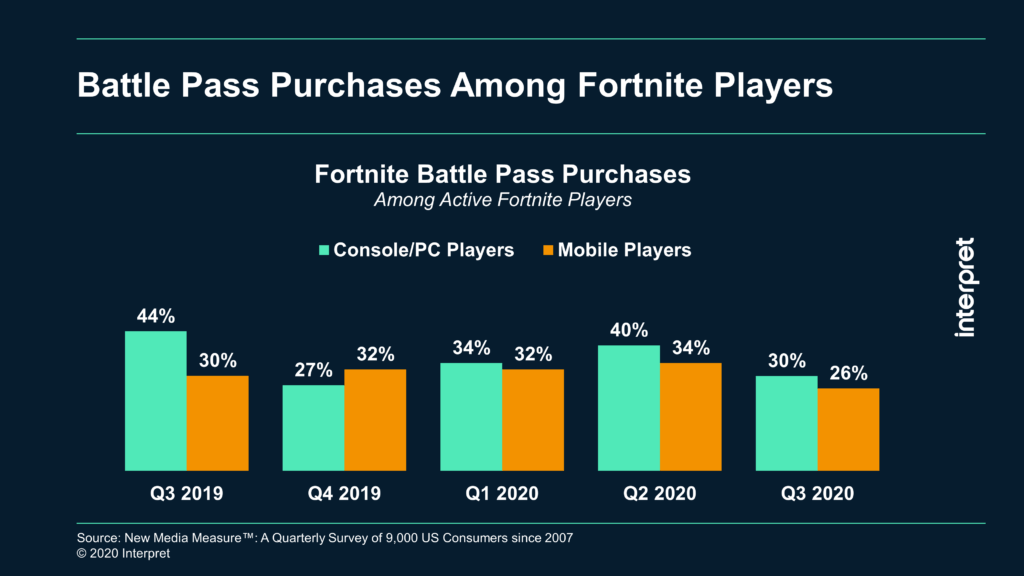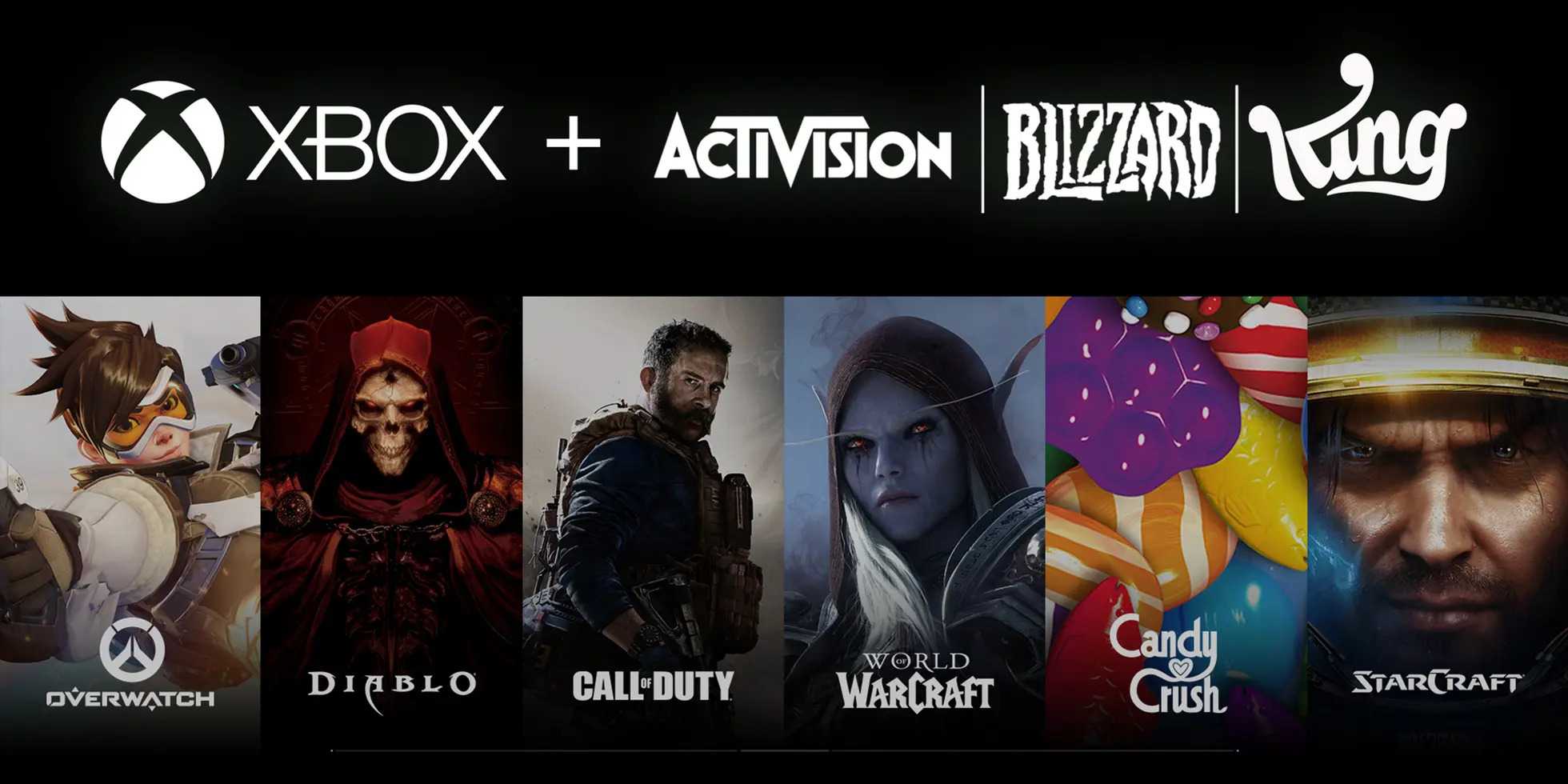Fortnite has become much more than the game itself. Many have argued that Epic Games is well on its way to building the metaverse. The battle royale title is already a thriving world with numerous live events, such as Travis Scott’s concert (which drew 30 million unique participants and 200 million YouTube views) and exclusive crossovers with Star Wars, Marvel, and more. It’s become such an entertainment pillar, that Netflix even considers it one of its biggest threats.
It’s natural to see some ebb and flow with live services but relying on microtransactions and battle pass purchases for new seasons can lead to some erratic revenue generation. For example, from Q3 2019 to Q4 2019, Interpret’s New Media Measure® shows that battle pass purchases among active Fortnite players slipped considerably among console players, with the numbers being down year-over-year as well. On the other hand, going from Q1 to Q2 2020 reveals a spike coinciding with the beginning of COVID-19 lockdowns and the kickoff of Chapter 2 – Season 2 at the end of February.
One way to smooth revenue volatility is through a subscription business model. Epic Games has officially confirmed that it’s launching a Fortnite Crew subscription for $12 per month, timed with the arrival of the Chapter Two – Season 5 update on December 2nd. The Crew subscription not only gives players a battle pass for Season 5, but it provides 1,000 V-Bucks each month to spend on in-game items and a Crew Pack outfit bundle just for members, with other exclusive outfits to follow. Players can cancel their subscription at any time.
Epic Games, which produces the Unreal Engine powering many of today’s next-gen games, certainly isn’t in any dire need financially; a subscription is just another way to monetize a highly engaged audience. Epic is riding high on a new round of funding that values the company at more than $17 billion.







